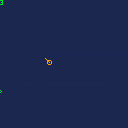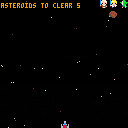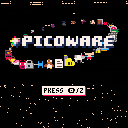Introducing Hypercolor Paint, a high-color painting application for the PICO-8.
Features:
Paint in either high color mode (flicker) or standard (dithered) mode.
While editing, pixels are treated as 56,535 level 3-channel color.
Use a variety of brushes, with control of color, size and pressure to achieve desired effects.
Save images (requires download)
Export images (requires download)
Example Images: (High color mode is simulated)




.jpg)

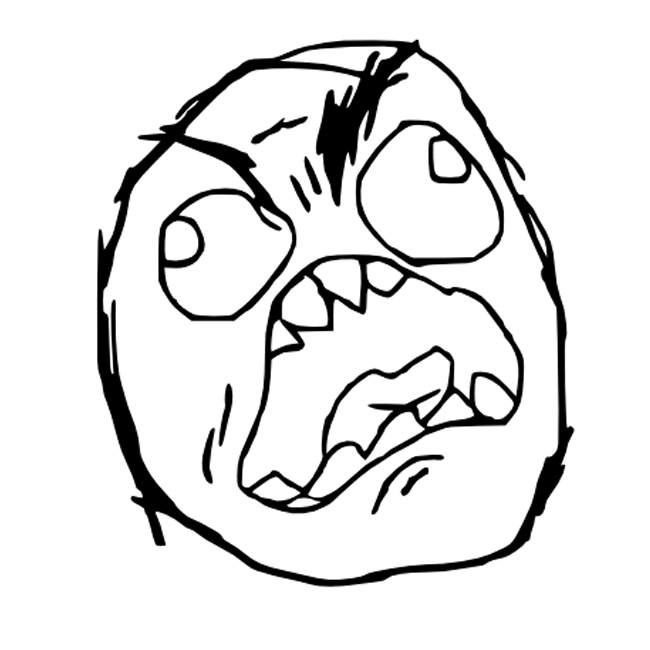


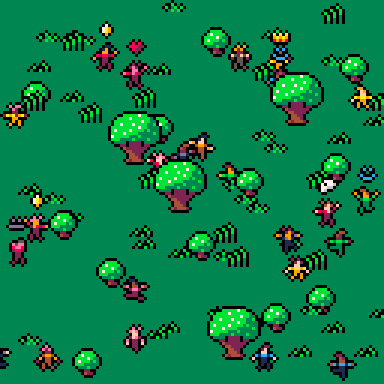
Each of these games fits inside a single tweet.
An Out Run style game with a day/night cycle. Left/right to move.
You are a bird that must collect falling seeds in this arcade game. Up flies up, left/right move sideways. If you fall out of frame, you are just outside and need to move back in; if you fall below, all you have to do is hold up and you should reappear.
Hello, I'm happy to announce Fantasy Console Game Jam 4 hosted by Nopy and pixelherodev.
Pick your best fantasy console and make a game in one week!
Join the discord server if you haven't already: https://discordapp.com/invite/sFeDxWK

Here's a project I've been working on. It started as a simple viewer for different graphs, but then it turned into a platformer. The game is fully playable, but it needs some additional content, which is why I put it under Work in Progress.
What makes this project interesting is the fact that I didn't use any sprites or the map editor at all. Every stage is constructed using functions. Funtions can be very powerful for setting collision, as this way you can make pretty much any shape you want. You can also make the terrain dynamic and depend on time. I also added some simple physics into the game, utilising the difference in values of the function for the ball to gain some speed, but it could definitely be better. It's a bit slippery, but I wanted the ball to have some sense of momentum.





can someone tell me why I am running out of memory?
@Catatafish I completely changed the question I realized i do not have an infinite loop. I just assumed since I was running out of memory.
this line seems to be doing it and idk why..
o:procx() |


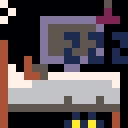

PICOWARE!
Do you love WarioWare? And do you love PICO-8? What we if we combine them into one game that you can play in your browser, right now?
Say hello to PICOWARE!
Over 50+ developers made 68 microgames during the 24 hour PICOWARE gamejam starting on July 27th 2019, with the intention of combining them together into one bigger game, called PICOWARE!
It's there! Up above! This is the game! The game all the cool kids play! Don't you want to join them? Do you want to stick out? Of course not!
SHARE PICOWARE!
Fancy a fancy link? Here!
is.gd/picoware
Use Twitter? Here's the official tweet-tweet!








Edit: not sure how I'm expected to display multiplication using the syntax here, but assume there's a X or star or whatever between 15 and i etc.
I was trying to initiate this statement here, which I can do:
for i=1,4 do
print(i, 15i-14, 15i-14, 14)
end
But then I wanted to move the diagonal array of 4 numbers with the arrow keys around the screen. I tried the code below but keep getting errors. I'm guessing my argument is setup wrong and I can't call i as the same variable in all these statements and make it work...? Can someone help me understand the immediate problems with the code, and then afterwards if viable suggest an alternative method of doing so. I'm still learning so my immediate concern is figuring out what is wrong here specifically.
function _init()
j= {
x=15i-14,
y=15i-14
}
end
function _update()
if btn(0) then j.x-=1 end
if btn(1) then j.x+=1 end
if btn(2) then j.y-=1 end
if btn(3) then j.y+=1 end
end


can someone tell me why this throws the error "attempt to call global vec a table value"?
vec clearly has its metatable set with a call metaevent
vec=
{
x=0,
y=0,
mag=function(o) return sqrt (o.x^2+o.y^2) end,
ang=function(o) return atan2(o.x, o.y ) end,
nrm=function(o) return vec(o:ang()/360) end,
}
vecmeta=
{
__call=function(o,x,y)
o =o or {}
o.x=y and x or cos((x+90)/360)
o.y=y and y or-sin((x+90)/360)
return setmetatable(o,vec)
end,
__eq=function(a,b)
a=type(a) == "number" and vec(a,a) or a
b=type(b) == "number" and vec(b,b) or b
return (a.x==b.x and a.y==b.y)
end,
__add=function(a,b)
a=type(a) == "number" and vec(a,a) or a
b=type(b) == "number" and vec(b,b) or b
return vec(a.x+b.x,a.y+b.y)
end,
__sub=function(a,b)
a=type(a) == "number" and vec(a,a) or a
b=type(b) == "number" and vec(b,b) or b
return vec(a.x-b.x,a.y-b.y)
end,
__mul=function(a,b)
a=type(a) == "number" and vec(a,a) or a
b=type(b) == "number" and vec(b,b) or b
return vec(a.x*b.x,a.y*b.y)
end,
__div=function(a,b)
a=type(a) == "number" and vec(a,a) or a
b=type(b) == "number" and vec(b,b) or b
return vec(a.x/b.x,a.y/b.y)
end,
}
setmetatable(vec, vecmeta)
local test =
{
pos=vec(0,0),
vel=vec(0,0),
}
|
This is a project I made for a class at college. It follows the trajectory of Victor Frankenstein through scenes from the novel "Frankenstein," analyzing how his 'family triangle' of relationships (that is, father, mother, and son, or the lack of these) changes over time. Each scene compares the location in the present day to their depiction in the novel (denoted as "1818").
The code is rushed, highly redundant, and resembles delicious spaghetti; please don't look at it.
Memory Card Game
Flip over two card to see if the pictures match. 1 point for each match is awarded.
For 1 to 4 players. Use a controller for each player.
-
Start: use the menu to:
- select player count (and reshuffle deck)
- toggle music on/off
-
Up/Down/Left/Right: select card to flip over
- Z: flip card over









 5 comments
5 comments





